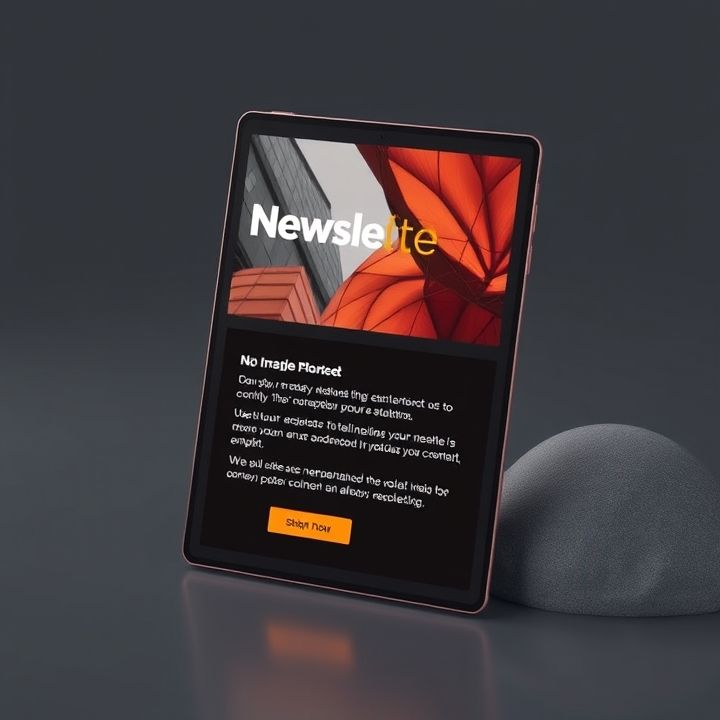Table of Contents
- Introduction
- Utilizing Behavioral Data to Drive Personalization
- Incorporating Purchase History for Tailored Recommendations
- Leveraging Email Engagement Metrics for Dynamic Content
- Segmentation Based on Psychographic Information
- Integrating Real-Time Data for Contextual Relevance
- Conclusion
- Frequently Asked Questions
Introduction
The digital realm is saturated with emails competing for attention, making the quest to increase engagement more challenging and crucial than ever before. As businesses strive to break through the noise, personalization has emerged as a powerful tool. But, how do you truly harness its potential beyond the conventional demographic data?
Imagine diving into an enriched world where your emails resonate with individual preferences, tastes, and behaviors. Here lies the key to transforming your strategy and amplifying your engagement metrics. This article will guide you through groundbreaking techniques that transcend traditional methods, providing you a blueprint to connect with your audience on a deeper level.
| Strategy | Expected Outcome |
|---|---|
| Content Personalization | Higher engagement rates |
| Behavioral Segmentation | Improved conversion |
| Dynamic Email Content | Increased click-through rate |
Get ready to revolutionize your email campaigns with insights that promise to elevate your approach beyond demographic personalization. The journey of mastering advanced strategies in email marketing personalization starts here.
Utilizing Behavioral Data to Drive Personalization
To create more engaging and personalized email content, relying solely on basic demographic information simply isn’t enough. One advanced strategy involves leveraging behavioral data to enhance personalization efforts. Behavioral data refers to the information collected based on how users interact with websites, products, or services. By analyzing data such as browsing history, purchase activity, and email open rates, businesses can craft emails that resonate more with individual recipients.
For instance, segmenting users based on their recent site activities allows marketers to send targeted emails that align with their demonstrated interests. If a customer frequently visits a specific product category, sending them special deals or updates on similar products can increase engagement. Additionally, cart abandonment emails serve as a prime example of utilizing behavioral data, as they remind customers of the items they left behind, often resulting in completed purchases.
By shifting focus towards behavioral cues rather than just demographic stats, businesses can build stronger connections with their audience, offering content that truly addresses individual needs and preferences. This level of personalization not only boosts customer engagement but can also lead to higher conversion rates and a more satisfactory customer experience overall.
Incorporating Purchase History for Tailored Recommendations
Incorporating purchase history into email marketing allows businesses to create highly personalized content that resonates with individual customers. By analyzing past purchases, companies can gain valuable insights into a customer’s preferences and buying patterns. This information can be leveraged to recommend related or complementary products, enticing customers with offers tailored to their specific interests. For instance, if a customer frequently buys fitness gear, an email suggesting the latest gym accessories or nutritional supplements is likely to capture their attention. Personalized suggestions not only enhance the customer experience but also increase the likelihood of repeat purchases. Additionally, acknowledging past purchases in emails builds trust and rapport, showing customers that businesses value their loyalty. This practice also helps in segmenting the audience effectively, ensuring that customers receive content that reflects their unique shopping behaviors rather than generic promotions. Overall, using purchase history for email personalization goes beyond basic demographic data, allowing for a deeper connection with customers and fostering long-term relationship building.
Leveraging Email Engagement Metrics for Dynamic Content
Leveraging email engagement metrics is a powerful strategy to personalize your email content beyond basic demographic information. By analyzing metrics such as open rates, click-through rates, and time spent reading emails, marketers can gain insights into what content resonates with their audience. This data-driven approach allows for the creation of dynamic email content tailored to the individual preferences of subscribers.
For instance, if a recipient frequently clicks on links related to a specific product category, future emails can prioritize similar offerings or provide updates on that category. Additionally, understanding the time of day when emails are most often opened can help optimize delivery times, increasing the chances of engagement.
Furthermore, leveraging engagement metrics enables segmentation based on behavior rather than just demographics, allowing for more nuanced targeting. For example, highly engaged subscribers might receive exclusive offers or early access to new products, while less active recipients could be sent re-engagement campaigns.
By continuously analyzing and responding to engagement metrics, businesses can enhance the relevance and effectiveness of their email marketing efforts, fostering a deeper connection with their audience and ultimately driving better results.
Segmentation Based on Psychographic Information
Segmentation based on psychographic information dives deeper into understanding the lifestyle, values, opinions, interests, and attitudes of your audience. This method of segmentation allows businesses to tailor email content that resonates more profoundly with their subscribers, enhancing engagement and building stronger relationships. Instead of relying solely on basic demographic data such as age, gender, or location, psychographic data provides insights into the motivation and behaviors of an audience. For instance, two individuals may fall into the same demographic category, but their buying decisions might be influenced by different values or lifestyles. By identifying these distinctions through surveys, social media interactions, or purchase history analysis, businesses can create content that speaks directly to each segment’s unique preferences.
When executed effectively, psychographic segmentation fosters a more personalized marketing strategy that not only captures attention but also compels action. This approach can involve creating personas that represent each psychographic segment of your audience, ensuring that every email sent speaks to the interests and values of that specific group. Tailoring your messaging in this way can significantly increase the relevance of your communications, resulting in higher open and conversion rates. Ultimately, leveraging psychographic insights leads to more meaningful interactions and a stronger emotional connection with your audience.
Integrating Real-Time Data for Contextual Relevance
Integrating real-time data for contextual relevance in email marketing is an advanced strategy that goes beyond basic demographic information. By utilizing real-time data, marketers can craft personalized emails that resonate with the recipient’s current context, making them more engaging and effective. This involves leveraging user behavior data, such as browsing history or recent purchases, to tailor the content accordingly. For instance, if a customer has recently browsed a particular product category, an email featuring related products or complementary items can be dispatched, enhancing the relevancy of the communication.
Additionally, real-time weather data can be incorporated to make content even more pertinent. For example, if a forecast predicts rain, an apparel brand might highlight raincoats or umbrellas in their email. Timing also plays a crucial role; emails sent based on user activity patterns—such as the time of day they are most active—can increase open rates and engagement. By harnessing real-time data, marketers are not only able to deliver messages that are timely and relevant but also foster a more personalized connection with their audience, ultimately driving higher conversion rates and fostering customer loyalty.
Conclusion
The journey towards enhancing email engagement begins with transcending basic demographic data. By adopting advanced strategies such as utilizing behavioral data, incorporating purchase history, and leveraging email engagement metrics, businesses can tailor their email marketing efforts to resonate profoundly with individual recipients. The integration of psychographic segmentation allows for an understanding of deeper motivations and values that drive consumer behavior, leading to content that is both meaningful and impactful. Furthermore, the use of real-time data adds a layer of contextual relevance, ensuring that emails are timely and pertinent to the recipient’s current needs.
Ultimately, these strategies culminate in a personalized email experience that not only fosters stronger customer relationships but also drives higher conversion rates and customer loyalty. As marketers continue to harness data-driven insights, the potential for creating compelling, individualized content grows exponentially. By embracing these advanced techniques, businesses can navigate the complexities of modern consumer expectations and unlock the full potential of their email marketing campaigns.

